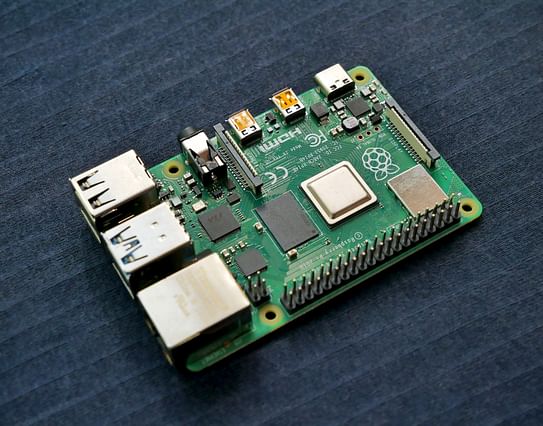
Automating Your Home with Raspberry Pi: A Beginner's Guide
If you're looking for ways to make your home smarter, more secure, and more energy-efficient, then you might already know that home automation is the way to do it. But what you might not know is that you don't need to spend a lot of money on expensive equipment and services to get started with home automation. In fact, all you need is a Raspberry Pi, a credit-card sized computer that can help you control your home devices and make them smarter.
What is Raspberry Pi?
Raspberry Pi is a single-board computer that runs on the Linux operating system. It was designed by the Raspberry Pi Foundation to promote the teaching of basic computer science in schools and developing countries. However, over the years, Raspberry Pi has become a very popular platform for various projects, including home automation.
Getting started with Raspberry Pi
To get started with Raspberry Pi home automation, you'll need a few things:
- A Raspberry Pi computer (Model 3 or later is recommended)
- A microSD card (at least 16GB)
- A power supply (2.5A or higher)
- A keyboard and mouse (either USB or Bluetooth)
- A monitor or TV with HDMI input
- An ethernet cable or WiFi dongle
Once you have the above items, follow these steps:
- Download and install the latest version of Raspberry Pi OS (formerly known as Raspbian) onto your microSD card.
- Insert the microSD card into the Raspberry Pi computer.
- Connect the Raspberry Pi to your monitor or TV using an HDMI cable.
- Connect the keyboard and mouse to the Raspberry Pi using USB or Bluetooth.
- Connect the power supply to the Raspberry Pi.
- Turn on the power supply.
After completing these steps, you should see the Raspberry Pi boot up and display the desktop environment. From here, you can start setting up your home automation system.
Setting up your Raspberry Pi home automation system
There are many ways to set up your Raspberry Pi home automation system, but one of the most popular is to use Home Assistant, an open-source home automation platform. Home Assistant allows you to control your smart home devices, set up automations, and monitor your home's energy consumption, among other things.
To install Home Assistant on your Raspberry Pi, follow these steps:
- Open the terminal on your Raspberry Pi.
- Type the following command:
$ sudo apt-get install python3 python3-venv python3-pip libffi-dev libssl-dev libjpeg-dev libudev-dev
- Press Enter and wait for the installation to complete.
- Type the following command to create a virtual environment:
$ python3 -m venv homeassistant
- Activate the virtual environment by typing:
$ source homeassistant/bin/activate
- Install Home Assistant by typing:
$ pip3 install homeassistant
After completing these steps, you should have Home Assistant installed on your Raspberry Pi. From here, you can start adding your smart home devices to the platform and setting up automated routines.
Conclusion
Raspberry Pi is an affordable and versatile platform that can help you automate your home and make it smarter. With the right setup, you can control your devices remotely, set up automated routines, monitor your energy consumption, and much more. Whether you're a beginner or an experienced home automation enthusiast, Raspberry Pi is a great tool to have in your arsenal.
Posted on: Sep 28, 2022 Last updated at: May 4, 2023